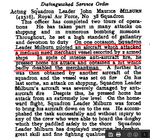I'm a fan of military history and I joined to this great forum because I'm doing a little research on the sinking of the German ship Sinfra in the Aegean on October 18 by ten USAAF North American B-25 Mitchell and RAF Bristol Beaufighter.
I have tried to look for the squadron of the aircraft of this sinking, but without success. I only understood that they left from airports in North Africa. Thanks for your help.
MS Sinfra - Wikipedia
Oriano
I have tried to look for the squadron of the aircraft of this sinking, but without success. I only understood that they left from airports in North Africa. Thanks for your help.
MS Sinfra - Wikipedia
Oriano



